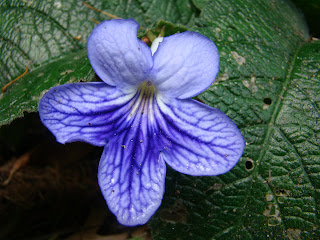
Blessed Unrest - How the Largest Social Movement in History is Restoring Grace, Justice and Beauty to the World - by Paul Hawken, is one of those treasured books that expand the mind, quicken the pulse and open the heart. It changes you, and you are grateful to be changed.
Hawken, founder of the Natural Capital Institute and http://www.wiserearth.org/, author of a number of best-selling books, must be one of the brightest and most knowlegable of the Earth's spokespeople.
In Blessed Unrest, he skillfully draws together a minimum of 130 000, that is actually more likely well over 1 million organisations - consisting of 10s of millions of people from all over the world who are actively engaged in environmental, social and indigenous culture protections. Hawken proposes that this disparate, 'under the media radar' movement that holds no guns, is not only the greatest Civil Rights movement in human history but also a response that is akin to a Planetary immune system arising all over the ailing Earth to counteract the rampant greed, pollution and waste inherent in free market fundamentalism.
Contrary to the corporate media depiction of a raggle-taggle bunch of ineffective, mis-guided do-gooders, hippies, activists and radicals, Hawkens argues that this global movement is rich - full of grandmothers, students, poets, professors, businesspeople, designers, tribe members, teachers, artists, friends, mothers and fathers, ordinary and extraordinary people.
It is a movement without leadership, without a single ideology. It is organic, coherent, informed, increasingly connected and self-organising - qualities of a living system, qualities that are highly conducive to Life.
Viewing it with an eagle-eye, Hawkens comments that when asked whether he is optimistic or pessimistic about the future, he responds: "When you look at the science that describes what is happening on earth today and aren't pessimistic, you don't have the correct data. If you meet the people in this unnamed movement and aren't optimistic, you haven't got a heart."
For sure, Blessed Unrest is happening in your neighbourhood, right now. If there's a group cleaning up a local stream, a person taking kids out on Nature walks, a human rights organisation intervening in a low-cost housing scheme, a CEO funding a women's shelter, a volunteer bird-watcher protecting a pair of Black Eagles, a school planting a Permaculture food garden - it's all part of Blessed Unrest.
In the entire history of humanity, there has never been so much energy, skills and creativity committed to the restoration of grace, justice and beauty in the world.
It is an immense time.
Watch: http://www.youtube.com/watch?v=N1fiubmOqH4
Read: Blessed Unrest by Paul Hawken




































